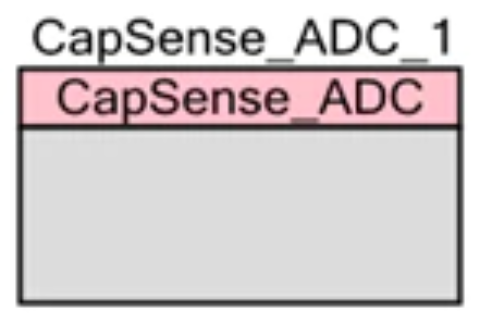PSOC™ 4 Capacitive Sensing (CAPSENSE™) ADC
General Description

CAPSENSE™ is a capacitive sensing solution. It supports multiple widgets (group of sensors used to form an interface) using both CSX and CSD sensing methods.
The CAPSENSE™ ADC component solution includes a configuration wizard to create and configure CAPSENSE™ Widgets, APIs to control the component from application firmware, and a CAPSENSE™ Tuner application for tuning, testing, and debugging.
Note The CAPSENSE™ ADC v3.0 component (and any version that follows) is not backward compatible with CAPSENSE™_CSD_P4 v2.40 or older. If you wish to migrate your design to the new CAPSENSE™ P4 v3.0 component, refer to the “Migration Guide” section in the datasheet for details on how to manually transition the design.
- Offers best-in-class signal-to-noise ratio (SNR)
- Supports Self-Capacitance (CSD) and Mutual-Capacitance (CSX) sensing methods
- Features SmartSense™ auto-tuning technology for CSD sensing to avoid complex manual tuning process
- Supports various Widgets, such as Buttons, Matrix Buttons, Sliders, Touchpads, and Proximity Sensors
- Provides ultra-low power consumption and liquid tolerant capacitive sensing technology
- Contains integrated graphical tuner for manual tuning, testing, and debugging
- Supports ADC function with:
- Selectable 8- or 10-bit resolution
- Sample rates of up to 11.6 ksps with 10-bit resolution
- Input measurement range from VSSA to VDDA on any GPIO pin
This component supports all CAPSENSE™-enabled devices in the PSOC 4 family of devices, including: Fourth generation CAPSENSE™: PSOC™ 4000S, PSOC™ 4100S, and PSOC™ Analog Coprocessor.
However, some features are restricted in specific devices:
- The Export Register Map feature will be available in the next component version.
- The CSD2x functionality will be available in the next version of the component.
- The CAPSENSE™ Tuner does not support ADC functionality. This feature will be added in a future component version.
- The IDAC sensing configuration feature will be available in the next component version.
